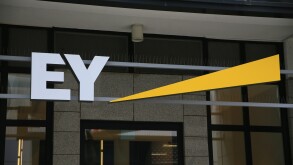The decision No. 7801/2020 announced by the Supreme Court on April 14 2020 was focused on the correct attribution of profit to an Italian permanent establishment (PE) of a U.S. bank.
The general principle underlying the decision is the so called ‘AOA’ (authorised OECD approach) pursuant to which a PE is considered, for the purpose of computing its taxable income, as a separate and independent enterprise engaged in the same or similar activities under the same or similar conditions. This means that the profits (and related costs) of the different parts of an enterprise are allocated on the basis of a fiction that the PE is a distinct and separate entity.
Specifically, the profits attributable to the PE are determined by way of a functional and factual analysis, which involves the consideration of factors, such as the functions performed, the assets used and the risks assumed. Moreover, with regard to the pricing of internal dealings between a PE and the rest of the enterprise, the arm’s-length principle is applied. The AOA has been officially introduced in the Italian Corporate Income Tax Code in 2015 (Article 152).
Background to the decision
The case under analysis – referring to fiscal year 2003 – involved a bank resident in the U.S. performing its activity in Italy by means of a PE. The Italian PE granted loan agreements to its Italian clients. The bank decided to sell to a third party these agreements and the operation generated losses which were attributed to the PE’s profit and loss accounts.
The outcome of a tax inspection on the branch concerning the fiscal year in which the sale of the loan agreements took place, was an assessment for direct taxes: the tax office challenged the deduction of the amount concerning the losses deriving from the transfer of the agreements, stating that the relating costs should have been attributed to the U.S. parent and not to the Italian PE.
The bank appealed to the Provincial Tax Court (first degree) which accepted the arguments of the bank. Then, the Regional Tax Court (second degree) ruled in favour of the tax office and the taxpayer appealed the decision before the Supreme Court on various grounds, including that the tax office had not provided any proof demonstrating the ultimate connection of the costs challenged with the general business activity conducted by the U.S. parent.
To have a clearer picture of the dispute, it is worth mentioning that the Regional Tax Court first noticed that there was a credit line in place between the parent and the PE through which the latter could draw the funds necessary to carry on its business activity vis à vis the Italian clientele. Subsequently, the second degree court also examined the free capital attributed to the PE and seemed to highlight a connection between the same free capital (deemed not sufficient) and the operational losses registered by the branch in relation to the sale of the loan agreements to a third party.
In other words, the Regional Tax Court assimilated the costs incurred by the branch for the sale of certain activities to the costs for procuring financial resources which – differently – should have been qualified as free capital. Accordingly, these costs for procuring financial resources in excess of the free capital should have been considered not-deductible from the branch's income pursuant to the provisions of Article 7, paragraph 3 of the Tax Convention between Italy and the U.S.
The Supreme Court reversed the Regional Tax Court judgment and decided in favour of the taxpayer, confirming that the second degree court did not clearly explain the facts and circumstances (i.e., functions performed, assets used and risks borne) under which it could be possible to consider the losses under review pertaining to the U.S. parent and consequently denying the deductibility of the costs from the PE taxable income.
Once again, a sound functional and risk analysis of the activities specifically carried on by the PE is confirmed to be crucial in order to design a proper supply chain and related transfer pricing system, as well as a consistent attribution of profit to the branch, to be properly explained also to the tax administration in case of audit.
Gian Luca Nieddu
T: +39 02 7780711
E: gianluca.nieddu@hager-partners.it
Barbara Scampuddu
T: +39 02 7780711
E: barbara.scampuddu@hager-partners.it













